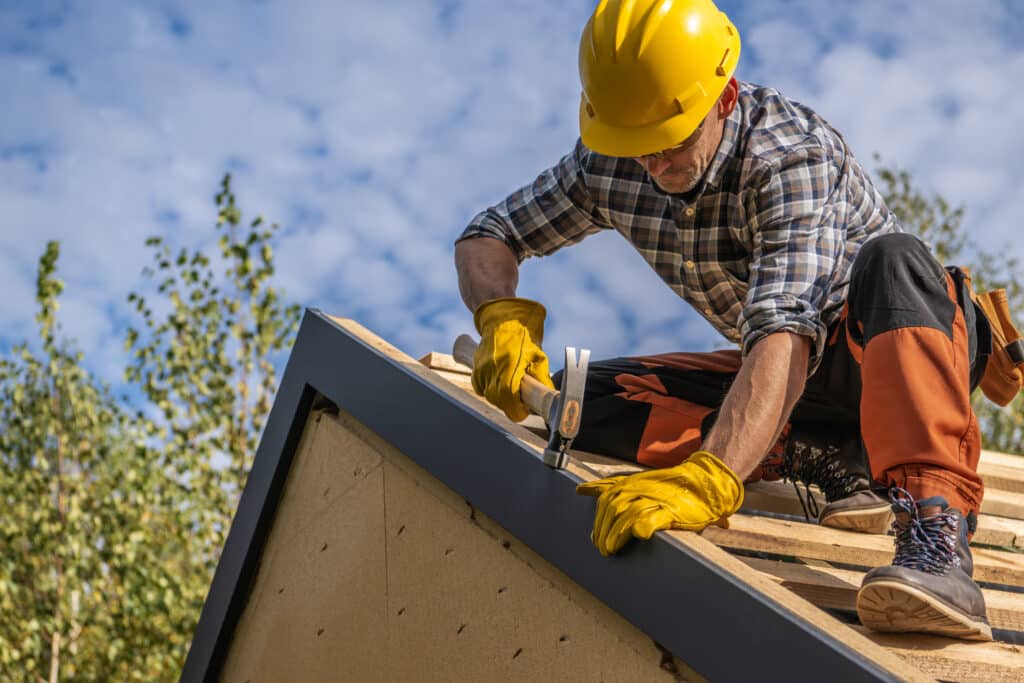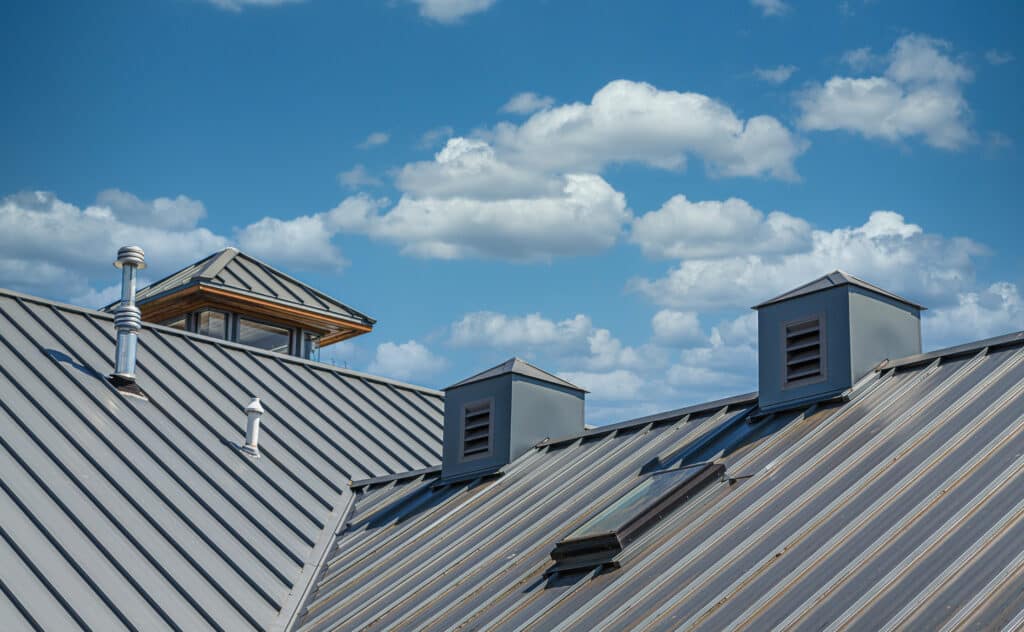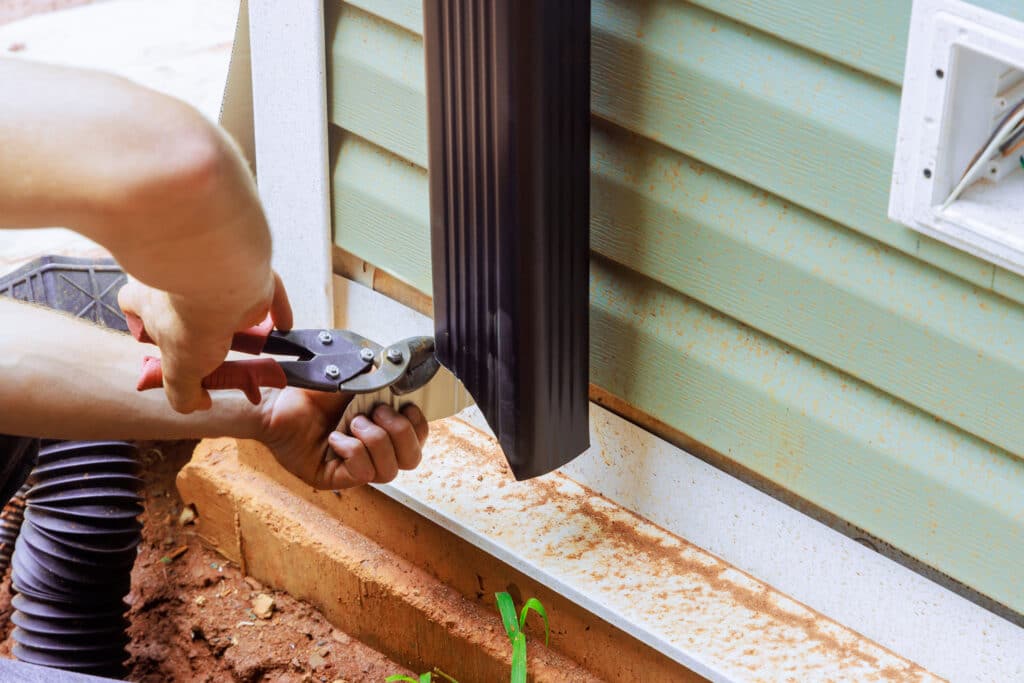Living in warm coastal areas is mostly great, but doesn’t come without its fair share of challenges, such as the constant threat of extreme weather phenomena. One of the biggest concerns for homeowners living in hurricane-prone areas is making sure their homes are prepared for heavy wind and rain, and it all starts with the roof.
Having a roof that can withstand a hurricane’s heavy wind and rain can make your post-hurricane cleanup much easier, as you and your family will benefit from literally having a roof over your heads. This article can help you choose the roofing materials that are most likely to do that.
Best Roofing Materials for Homes in Hurricane-Prone Areas
Roof damage can significantly increase your repair bill after a hurricane, so it makes sense to invest in the right type. These are some of the best-rated roofing materials for homes in areas that are likely to be affected by hurricanes:
Metal Roofing
Metal roofs can be extremely long-lasting, with some still doing a great job even after 100 years. They also come in a wide variety of styles and require relatively little maintenance. While they’re generally a good fit for any home, their resistance to heavy winds makes them particularly suitable in hurricane-prone areas. They can withstand winds up to 140-160 mph, and they’re also flame-retardant. Another perk for homeowners in warm areas like Florida is that metal roofs reflect light, keeping the home underneath cooler as a result.
Metal roofs still come with a few downsides. They tend to cost more than some other roofing materials, and some types of metal aren’t suited for coastal areas, as the salty air can cause corrosion. You can avoid that by getting a zinc, copper, stone-coated, or aluminum roof.
Clay Tiles
Tile roofing is another great choice for hurricane-prone areas. Similar to metal ones, they can withstand extreme winds, and their ceramic composition provides effective insulation against the sun’s heat. They’re also highly impact resistant and, although they may deteriorate from a direct impact with an object, such as a fallen tree in a hurricane, their being made from individual tiles means you only have to replace the damaged ones.
The main downside of clay tiles is their weight. They tend to be heavy, which is great for withstanding heavy winds but requires a sturdy roof structure to prevent damage over time. They may also be more expensive compared to other choices, as installation is labor intensive since each tile needs to be installed individually.
Asphalt Shingles
This is a popular alternative to metal and clay tiles, as they offer excellent hurricane protection and are more affordable than the other two. High-quality asphalt shingles can withstand winds up to 150 mph, which is enough for most hurricanes. They also come in various colors and designs, making it easier to find one that fits your home’s architecture.
Despite being viable alternatives to metal and clay, asphalt shingles don’t share the same durability and longevity as these materials. They’re less likely to withstand heavy impact, and even top-quality ones typically have shorter lifespans.
Slate Roofing
Slate is a natural stone that can be cut into thin layers and used to create a hurricane-resistant roofing material. Its weight and sturdiness make it excellent for protecting against heavy winds and powerful impacts when properly installed. They also give your house an elegant look and are extremely long-lasting, with some still doing a great job after 150 years.
However, being very heavy means that you’ll probably need to reinforce your home’s structure before installing them. They also tend to be more expensive than other choices, so fitting them on your roof will probably require a major investment. The upside is that you’ll probably never have to worry about any hurricane damage to your roof ever again.
Which Roofing Materials Should You Avoid in Hurricane-Prone Areas
While knowing which roofing materials are best for hurricane protection, it also helps to know what you should avoid. Some of the worst are:
- Wood shake roofs: While wooden roofs look great and can give your home a rustic look and feel, you’ll soon regret your choice if you live in a hurricane-prone area. They can be easily damaged by heavy winds, provide little or no fire protection, and the excess moisture will cause them to absorb water, leading to mold and rot.
- Low-quality asphalt shingles: While proper asphalt shingles are a great choice for homeowners in hurricane-prone areas, low-grade ones are the exact opposite. They’re much more lightweight, meaning that strong winds are likely to simply peel them off your roof.
How To Prepare Your Roof for Hurricane Season
While having the right roofing material is an essential first step, you can also take proactive measures to ensure it will protect you when a hurricane hits. Some essential ones include:
- Clean all your drains and gutters to prevent water from pooling on areas of your roof, which may lead to premature damage and even leaks due to the excess weight.
- Trim the trees around your home each spring, as a hurricane’s heavy winds can cause branches to break off and hit your roof, potentially causing significant damage.
- Have your roof professionally inspected from time to time to detect and address minor issues before they grow into major ones that are much more expensive to repair and may cause additional damage during a hurricane.
Protect Your Home and Everyone Inside by Choosing the Right Roofing Material
While hurricanes don’t happen every day, it makes perfect sense to take all the necessary steps to prepare yourself for the next one. Having the right roofing material is an essential part of your preparation, as it will help keep water from entering your home, damaging everything inside, and endangering both yourself and your loved ones. While each choice has its own pros and cons, every material mentioned in this article will do a great job both today and for many years to come if properly installed. The final decision is ultimately up to you.



